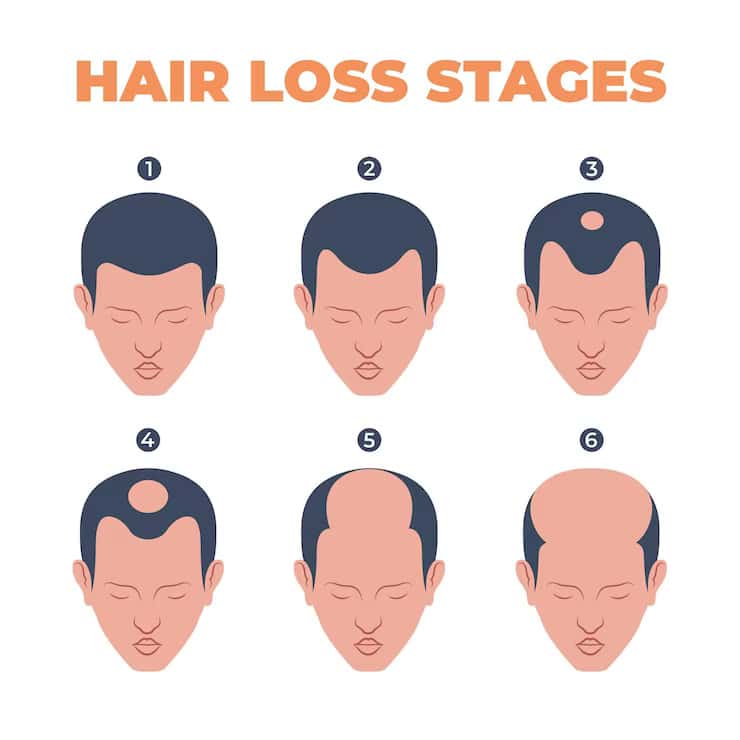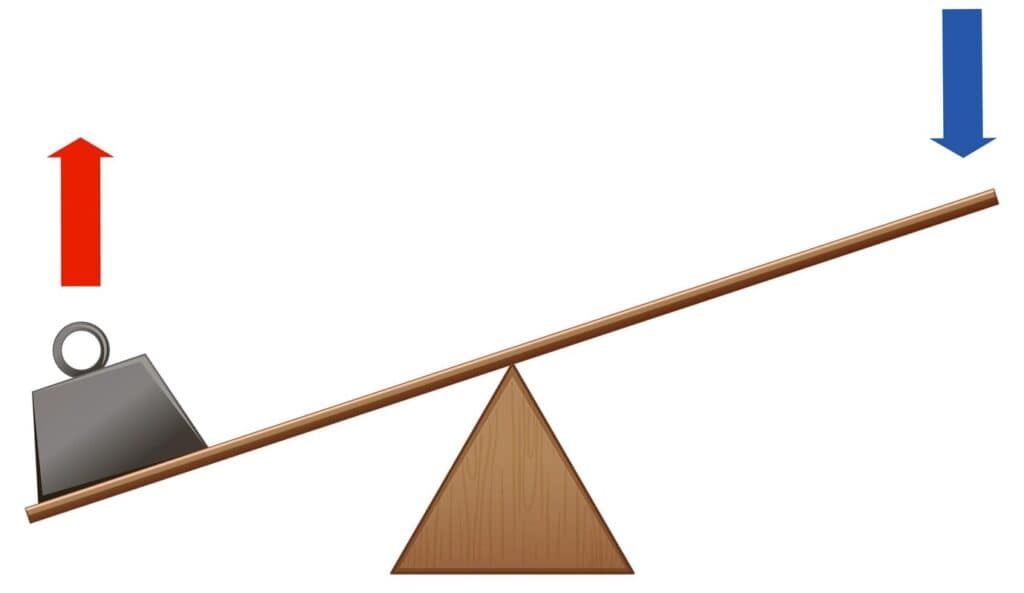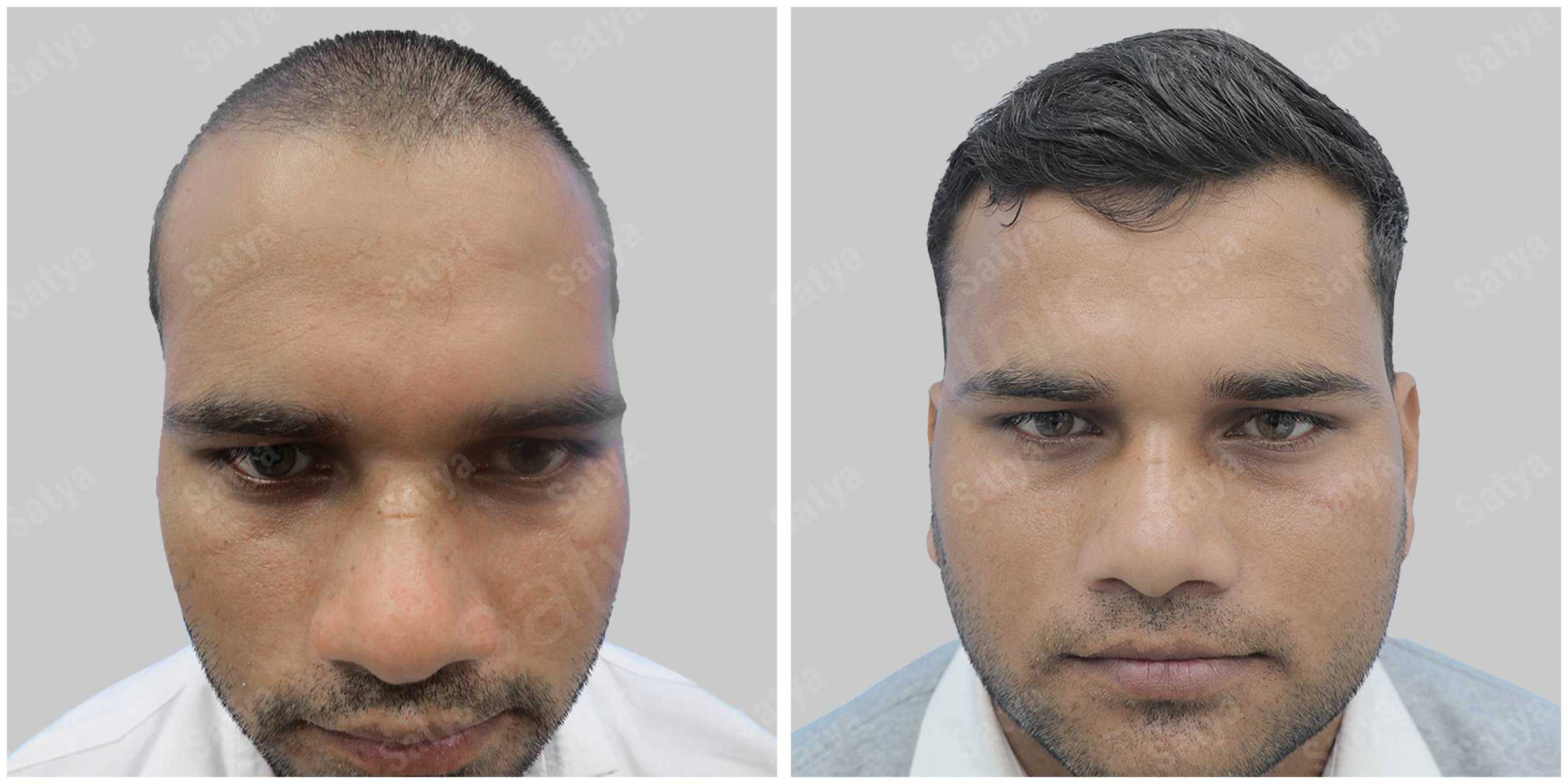Balding is not a condition that happens all at once, even through it might be scary and distressing. Rather than going bald overnight, most men lose their hair gradually over several years or even decades.
However, a lot of men wait until it’s too late to recognize the problem of hair loss and, more significantly, to act and cure it.
The Norwood scale can help with that. The seven phases you might experience if you’re losing your hair are given below, along with an description of how the scale operates.

The 7 Stages of Hair Loss
The different stages of male pattern baldness are measured and categorized using the seven-stage Norwood Scale, often known as the Hamilton-Norwood scale.
1. Stage 1
In Norwood stage 1, there is either minor or no hair loss or hairline receding
2. Stage 2
When you first start to experience hair loss, you are at a Norwood 2 stage. At this point, the usally M, V, or U-shaped hairline’s early indicators start to show.
When their hairline starts to recede around their temples, many men identify the earliest symptoms of hair loss. triangle alopecia, for instance, is a type of Type 2 hair loss on the Norwood hair scale characterized by oval or triangle bald patches surrounding the hairline. Another term for this would be a mature hairline.
3. Stage 3
The hair loss in men with Norwood Type 3 is significantly more obvious. The hairline recedes further and forms an M or V during this stage.
Defined as a Norwood 3 hairline, some men experience a receding hairline along with small areas of scalp baldness.
4. Stage 4
The hair loss in Norwood 4 is more apparent and severe. Men who are suffer from this stage of hair loss have a significant bald appearance around their hairline due to excessive hair loss.
5. Stage 5
You will noticeably and significantly lose hair around your hairline and forehead at this stage. Some men suffer from Norwood Type 5A hair loss, which is defined by less of a dividing band between the hairline and crown and more noticeable hair loss on the scalp.
6. Stage 6
Hair loss in Norwood Type 6 is extremely severe. Almost all of the hair that once comprised your hairline and frontal scalp, or crown, will have fallen out at this point.
In any lighting scenario, your scalp will be easily visible through your hair, even though there may still be some hair dispersed across it.
7. Stage 7
The most serious type of hair loss is Norwood 7. Except for a few stray hairs or small places with relatively modest hair growth, virtually none of the hair on your scalp will be left by this point.
By now, all that will remain of your hair will be in the traditional horseshoe design around the back and sides of your head. This hair could be extremely thin and devoid of structure.
Conclusion Regarding the Norwood Scale
- The extent and pattern of hair loss can be determined using the seven stages of the Norwood hair scale for male pattern baldness.
- Norwood stages 1 and 2 indicate the earliest phases of hair loss, with either no thinning at all or the beginning of a receding hairline and bald patches that are easy to identify.
- Stages three through five show a more visible receding hairline and serious hair loss, In stages 6 and 7 of hair loss, almost all of your hair is lost.
Book an appointment
Consultation

Repair

Blog

Galleries









